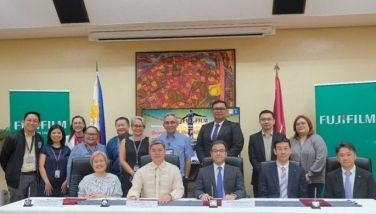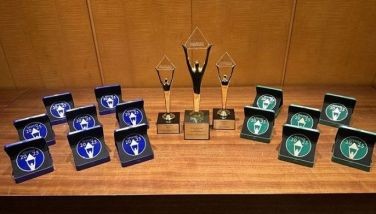The curse of the 3rd player

I have only come up with three sectors where a third player was welcomed with open arms, hyped as the game changer who would bring in the much-needed competition and lower rates, fares or charges. But instead the third players ended up struggling and floundering in a sea of challenges and PR nightmares.
Revisit the history of local television, telecoms and airlines and companies that entered as the third player and experienced bloody noses and financial beatings. When Channel 5 first got into the television industry, successive owners always said they would be happy being “a close third;” three owners later, Channel 5 and Channel 2 are now teaming up for a second shot at success.
In the world of mobile phones and telcos, the Gokongweis, Raymond Moreno and RSA all tried their hand at putting up a legitimate third player, only to be squeezed by the current duopoly. Now we have DITO telco which is still trying to live up to expectations of becoming the game changer, but from the looks of it, Elon Musk’s StarLink may end up stealing the thunder from DITO with a completely different technology.
For local airlines, the third player AirAsia has managed to stay up in the air past the COVID lockdowns, but the question is for how long? Unlike PAL and CebuPac which smoothened out the wrinkles in their operations, it seems that AirAsia has been lagging behind in terms of flight operations, turn-around time of aircraft and customer care and terminal standards.
The most common complaints in group chats and Facebook are from returning tourists from Boracay Island who had nightmarish experiences at the AirAsia check-in area at Caticlan Airport with flight schedules and delays. I recently discovered that at the Caticlan Airport, local airlines have separate areas; PAL has their own wing while AirAsia shares the other half with Cebu Pacific.
According to a businessman, he and his family left Boracay Island at 1 p.m. in accordance with the mandatory two hours before check-in presence. After check-in they found themselves on the second floor of the departure lounge and quickly discovered that the only women’s bathroom was closed for repairs, there was no flight information TV monitor, seats were piled with baggage, thereby depriving other passengers of seats and barely any available food and drinks for sale.
Their return flight was delayed by an hour and a half, they walked in the rain and the puddle to get from the terminal to the plane, resulting in wet & cold feet the entire flight. Then the pilots discovered a safety concern and spent one hour to fix the problem. Upon arrival in Manila, they had to stay in the plane for another hour because of a lightning strike alert that would have been dangerous for passengers deplaning and walking on the tarmac. All in all, the return took nine hours.
A high-ranking police official also shared his nightmare due to the numerous flight delays or push back on their departure time to Manila on another date. The AirAsia terminal he pointed out was POORLY managed and the facility was barely looked after. The PNP official was totally stressed out because they were traveling with an autistic child and the extended delays could have triggered a disturbing and unpleasant episode with the child.
Just this week an MIAA official posted on FB: “Hope airline operators will always bear in mind that not all of their passengers are adults who can bear long hours of flight delays. There are kids too, who become cranky and rowdy doing nothing while waiting for FIVE hours. Good if airports always have play areas where kids can get themselves busy. Public service always, first and foremost. Let us all remember that.”
Back in May an expat also experienced the same with AirAsia flying to Davao:
• May 26, 2022: Tickets were bought for three to Davao on 26 July @6:55 a.m.
• On July 17 the time was changed to 8:20 a.m.
• On July 22 the time was changed to 1750 (5:50 p.m.)
• On July 24 the time was changed to 1925 (7:25 p.m.)
• Because of the many changes, we were concerned about being delayed until Wednesday which is our “color coded” restriction for Manila. Therefore, we rescheduled our flights to leave a day earlier for 25 July.
• The schedule changed for 25 July, departure 1940 (7:40 p.m.)
While in the airport the flight changed again to the last flight out to Davao. These changes caused us to buy one extra day hotel stay in Davao and reschedule our pick-up at the airport. We landed close to midnight and made it to Toril in the early morning hours on the 26th of July.
Return travel for Monday, Aug. 1 at 1800 (6:00 p.m.)
• On July 28 we were rescheduled from 1800 to a departure of 2200 (10:00 p.m.)
• Because we needed to check out of the hotel at 12, I went online to reschedule an early morning flight.
• Rescheduled for the 10:40 a.m.
No more Air Delay-sia! I thought that this airline would have overcome its beginning struggles. Boy was I wrong.
* * *
In the spirit of fairness, I reached out to Mr. Steve Dailisan, spokesperson of AirAsia, regarding the complaints which he acknowledged and he explained how they have been trying to address these matters on site and operationally. Dailisan explained that part of the problem is related to the long-term non-operation of their aircraft, which now have to be sent to their regional center for mandatory servicing based on flying hours or time that aircraft have been grounded. Dailisan stressed that this operational bump is a priority because their priority is safety. All complaints were noted by Dailisan and he has promised to address them immediately, especially the suggestion of child-friendly facilities as well as monitors to clear seats and even bringing in mascots to entertain kids.
- Latest
- Trending

























